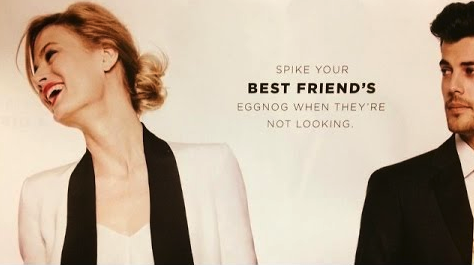
ometimes what you think is an amazing idea, isn’t always. A great way to learn how to best market your brand is to look at what others have done in the past, particularly those that have made some rather spectacular errors. And make sure that you don’t repeat their mistakes. Here are our top 5 marketing fails.
COCA-COLA – “New Coke”
During the 1980’s there was a fierce soft drink war between Coca-Cola and Pepsi. Coca-Cola was number 1 but had been steadily losing market share to Pepsi who were rapidly gaining on their rivals. This decline had the bosses at Coca-Cola so worried they decided they needed to fight back.
In April 1985 they did this with “New Coke”. This campaign was designed to blow Pepsi out of the water and confirm themselves as the undisputed number 1.
Unfortunately for Coke it had the opposite effect. Ignoring a century old recipe, consumers were upset and angry at the changes. New Coke was boycotted, and market share dropped even more sharply.
Campaigns were launched to bring back old Coke and protest groups started. This was national news on talk shows and also resulted in over 400,000 letters and calls to the company to complain. Imagine the impact if social media was around at this time?
Pepsi weighed in on the uproar and fuelled the flames.
“These two products, Pepsi and Coke, have been going at it eyeball to eyeball, and in my view the other guy just blinked.” – Roger Enrico, former PepsiCo CEO
Coke had inadvertently admitted that Pepsi’s product was superior, and they couldn’t compete with it. On the New York Stock Exchange shares of Coca-Cola dropped while those of Pepsi rose. New Coke lasted 77 days before the original Cola was re-introduced into the market.
BLOOMINGDALE’S – “Date rape”
In 2015, Bloomingdale's one of the world’s most iconic department stores released a Christmas ad that had a deeply problematic caption.
It seemed to be promoting Date Rape.

As you can imagine there was huge outcry globally which prompted a grovelling public apology from the store. What was not clear was how many meetings and sign-offs were required for this advert to be approved and who on earth came up with this concept and exactly what the message was supposed to say?
There really isn’t too much else to say about this, it is wrong on so many levels.
PEPSI – “Kendall Jenner”
In 2017 Pepsi released an advert featuring Kendall Jenner at a protest. She gives a can of Pepsi to a police officer who drinks from it while the crowd cheer.
The reason for this huge fail? The imagery was borrowed heavily from the #BlackLivesMatter movement and this caused a huge backlash claiming insensitivity, trivialisation and even racism. Critics accused Pepsi of appropriating imagery from serious protests to sell its product whilst also minimalizing the danger protesters encounter and the frustration they feel.
Pepsi’s big mistake was by trying to market to younger generations they completely ignored other generations who have lived through social injustice and turmoil.
The campaign lasted one day before Pepsi pulled the advert, but the damage had already been done by then.
HOOVER – “Airline tickets”
For decades the Hoover brand enjoyed a near monopoly on vacuum cleaner sales in the UK, responsible for almost half of all sales. So popular was the brand name that vacuum cleaners were often referred to as “hoovers”.
Towards the end of the 80’s and into the early 90’s and with a recession kicking in, sales started to fall as did profits. In an attempt to boost sales, Hoover offered 2 free airline tickets from the UK to Europe or the US for customers who spent more than £100 on their vacuums and washing machines.
The assumption from Hoover was that only a small number of purchasers would actually jump through the hoops that would be put in place to redeem the flights and they would spend far more than the £100 minimum offsetting the cost. This wasn’t the case though and the campaign was an instant success with consumers and products literally began to fly off the shelves.
A disaster quickly brewed for Hoover because the maths just didn’t add up. Over the next 6 years it cost the company £50m, resulted in numerous lost court cases and the dismissal of a number of top company executives. Over 220,000 customers managed to get their free air tickets and this fiasco was directly responsible for the collapse and subsequent sale of Hoover to Candy.
RATNERS – “Crap”
The top fail on our esteemed list is not a marketing campaign fail per se but more a lesson in how not to market your company. After inheriting his father’s business in 1984, Gerald Ratner turned Ratners, the small retailer into one of the largest high street stores. They became the biggest jewellers in the UK with shops on every major high street in the UK.
Life was good for the chain until Ratner himself presented at the Institute of Directors Annual Convention in 1991. In front of 6,000 businesspeople and journalists he was asked how it was possible to sell a sherry decanter for £4.95. To everyone’s amazement he answered, "because it's total crap"
The press had a field day turning this into national news and a spiral of decline ensued pushing the business £122m into the red after the company shares dropped £500m in a matter of days.
Customers boycotted the brand and the chain began to rapidly lose sales volume. All in all 330 stores in the UK and USA were closed and Ratner lost absolutely everything
